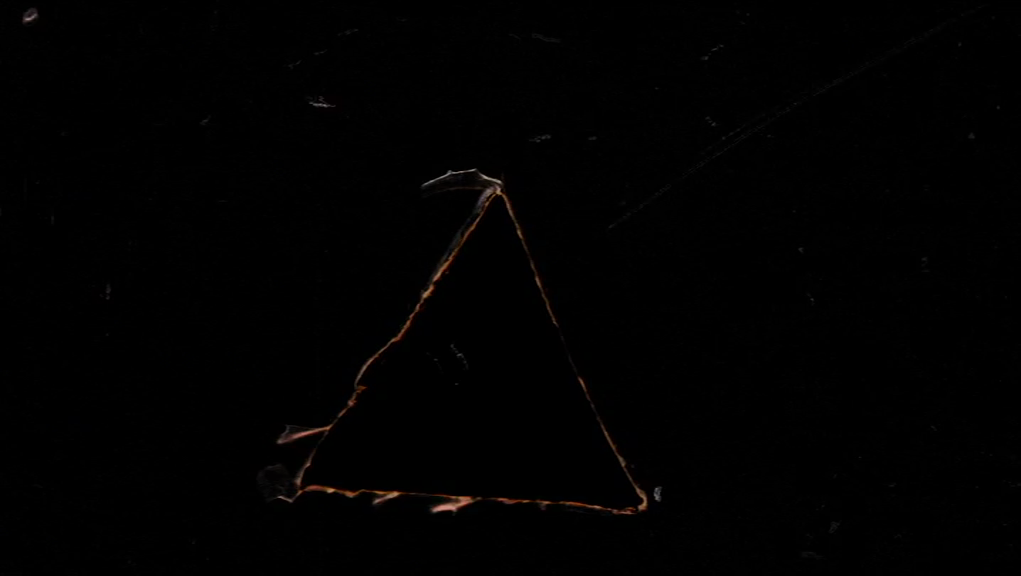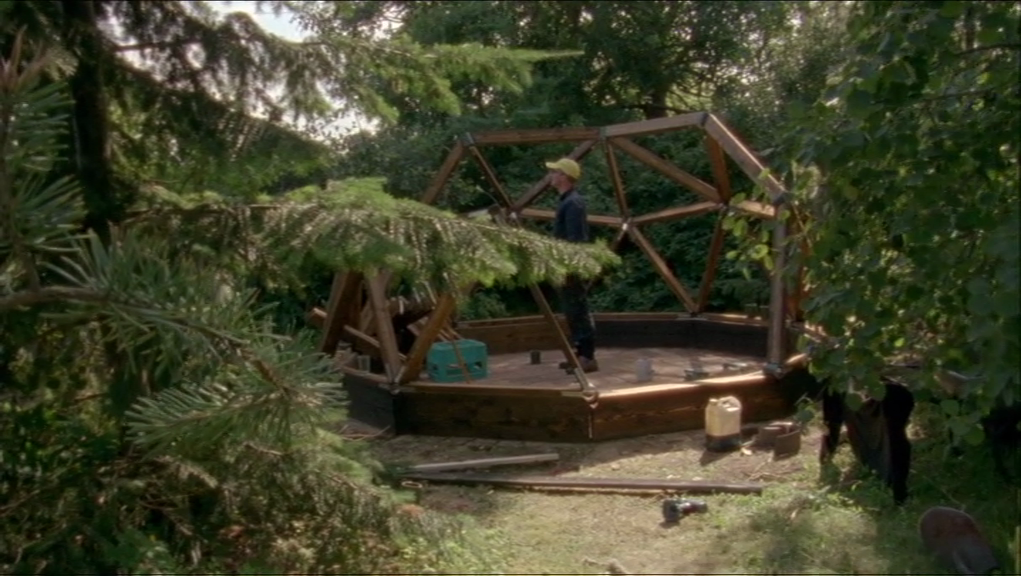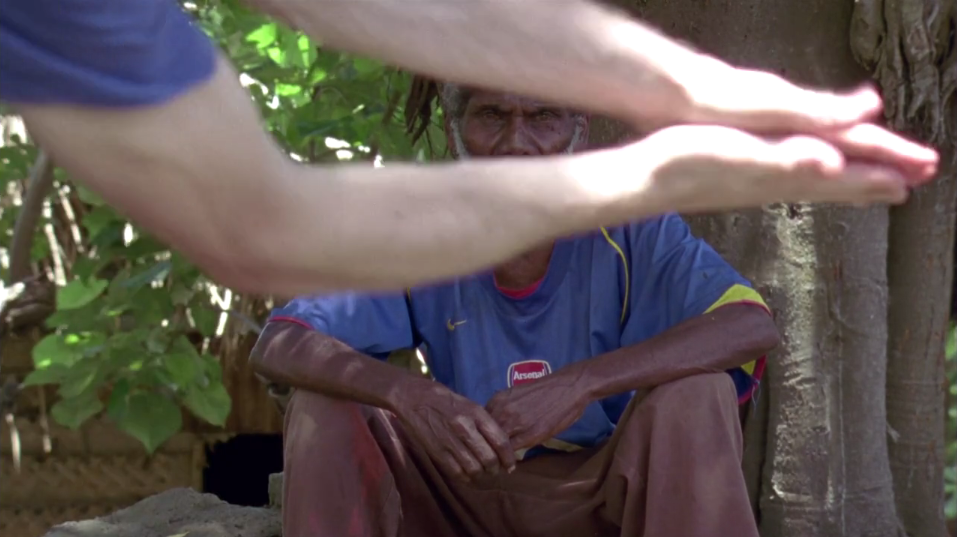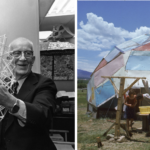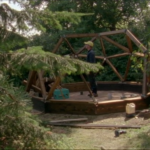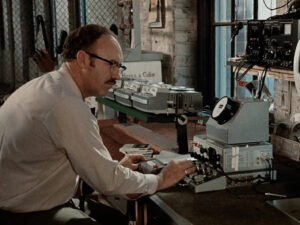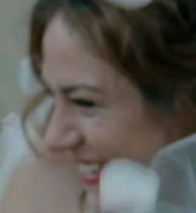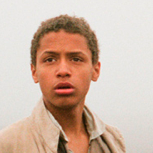Ben Russell, 2014
Maybe I will talk in my language and I will complete everything
I believe that Ben Russell is one of the most interesting artists currently working with and reflecting on the medium cinema. He visited Milano in early December 2013, so I took the occasion to ask him a few (too many) questions on issues of Semiotics, Film Theory, Film History and Philosophy. Meant as a sort of “follow-up” to the conversation we had in Summer 2012, the interview that follows is focused on his latest work: the feature film A Spell to Ward off the Darkness (co-created/co-directed by Ben Rivers) and the short film Let Us Persevere In What We Have Resolved Before We Forget.
Débordements : A couple of days ago, you wrote me that A Spell to Ward off the Darkness is a “spatial experience” to be experienced in a movie theater. Can you give me more details about that?
Ben Russell : A Spell to Ward off the Darkness is a film where the sound and the sound mix are really important : since the very beginning, Ben [Rivers] and I were thinking of 5.1 audio. The idea was to produce not just a visual field, but also an audio field…
D : A sort of “soundscape” ?
BR : You know, landscape is something you look at and soundscape is something you hear, but neither is necessarily something that you are immersed in. We were able to mix the sound in an actual cinema space in Paris, and we spent a lot of time to get the sound to function in a special, spatial way, so that the experience of the film would be both an experience of the space of the film and an experience of yourself in the cinema watching this thing with other people gathered in the same place.
D : Then what do I miss if I watch A Spell on my laptop?
BR : There is this sort of operating metaphor, which is that “the spell to ward off the darkness” is also cinema. Of course if you are in a dark space and turn on your computer the spell-metaphor works but, on a really basic level, the film addresses the image on a grand scale : A Spell posits the image as something monumental, something that is way bigger than you, something that can overwhelm you and consume you. Each of the three sections in A Spell has a really different framework and register, and I find it hard to imagine that someone might get totally lost, afraid or enthusiastic in the experience of something they see on a fifteen inch plasma screen. I just don’t think that it is possible – especially for the Black Metal section. Importantly, when you watch the film on your computer you are not watching it with fifty or one hundred other people : A Spell is engaged in a continuous conversation about the individual within the collective, and that’s also what the model of cinema is.
D : At the same time you have this free Vimeo channel, a showcase where your movies can be seen online. What’s the idea behind that ?
BR : Another way to think about your two last questions is that a photograph of a sculpture isn’t the sculpture – a photograph of a sculpture doesn’t give you the direct experience of the sculpture. When I would go to Art History lectures and see giant slides of tiny Diane Arbus’ photographs, I never assumed that I was actually seeing the image itself : the slide is just an index of the photograph. Similarly, the things you see on my Vimeo channel are meant to be indices of my films, to function as a sort of reference. I mean, if you compare them to the original source, they are clearly low-resolution files… You know, when I started making films I made them to be shown in cinemas and I have always imagined that cinema is what my films are – that they aren’t small images animated on computer screens. That being said, I think that it’s important to make one’s work visible : I have been making a lot of work over the years, and I have been making it quite quickly… Maybe the films and videos I was making fifteen or ten years ago are not as resilient as the ones I am making now (they work in a very different way etcetera), but if there’s no reference image of them then they cease to exist.
D : In relation to the index question: when you shoot your movies you shoot on film, right?
BR : Yes.
D : However, both A Spell and Let Us Persevere In What We Have Resolved Before We Forget exist as digital files only, right?
BR : Yes – A Spell, Let Us Persevere, and also River Rites and Trypps #7 (Badlands).
D : Is it just for economical reasons that they were not printed on film?
BR : Yes, it’s pretty much because of money. I’ve only made one film that I shot on Super 16 and then blew up to 35mm : Black and White Trypps Number Three. At the time, it cost me between five and eight thousand dollars to make a blow up – and five to eight thousand dollars is the budget for another film or two. It’s as simple as that. I know Ben [Rivers] really wants A Spell to be printed on 35 mm, but in that case the 35 mm film print wouldn’t come from the original negative, it would be generated through a digital intermediate. For me, it is a strange idea to long for this materiality once it has already passed once through the digital spectre… I think it would be great to see A Spell on 35 mm, but it’s really expensive: it’s something like twenty thousand Euros, which is… a few more films, or money that we could use to pay people more for working with us.
D : After converting the film footage into digital, do you intervene on it? I mean, with color grading and stuff…
BR : Sure – the footage we used for A Spell is color corrected, and Let Us Persevere has been a bit over-saturated intentionally. It would be a mistake to think that intervention or “interference” is something specific to the digital realm, though: when you work in film you make answer prints and all sorts of work prints – a lot of color correcting happens there, even if it’s not as selective as color correcting a digital file… Since Ben [Rivers] has never worked on video and I mainly work on film, both of us are aware that when we are filming we are shooting the image that is in front of us in this or that particular moment, and not the image that will be in front of us in the editing room.
D : How long did it take for you and Ben Rivers to edit A Spell ?
BR : We made the film in pieces, and by the time we started shooting the Commune section in Estonia we already had a rough edit of both the Black Metal and the Solitude sections. The edits of those sections didn’t change much after shooting in the commune. The editing of the Commune section took a while – a few months I’d say. For the Commune we had approximately a 15:1 shooting ratio [out of fifteen minutes, one minute ends up in the final cut] – we had seven or eight hours in total; for the Solitude section we had a 4 or 5:1 ratio; for the Black Metal section we had a 2:1 ratio.
D : I was thinking of the first shot in A Spell. The song near the end of the shot is really amazing…
BR : It’s a pagan fire-spell. It’s an old Estonian folk song that was re-orchestrated by Veldo Tormis, a contemporary Estonian composer, and sung by a children’s choir. It was important for me and Ben [Rivers] to begin the film with a fire-spell and we came across this one while we were shooting the Commune section in Estonia. The lake you see in the shot is in Finland, though – we discovered the song at the very end of the shoot.
D : The shot is really impressive too, it reminded me of the panning movements found in early cinema.
BR : It’s not a pan, actually. The movement isn’t a circle. It’s a figure-eight shape, the symbol of infinity. You know, among other things, A Spell is an investigation into the possibilities of transforming space through the device of the frame. What enters into the frame is in a constant state of becoming – nature becomes landscape becomes a waveform pattern in flux…
D : What you say reminds me of the first reviews of the so-called “phantom rides”, the late Nineteenth / early Twentieth century films in which the camera was placed on moving vehicles and “launched” into space. The reviewers of these films were blown away by cinema’s ability to transform the landscape…
BR : Phantom rides? That’s a great term – but unfortunately it wasn’t a conscious influence.
D : Back to the idea of a “fire-spell”, I think it was François Truffaut who said that we watch TV after dinner just like Neanderthals looked into the fire. In Cave of Forgotten Dreams, Werner Herzog draws a similar parallel between cinema’s moving images and the shadow-plays created by the fire on the walls of the caves…
BR : Yeah, and in the beginning of Ah, Liberty ! by Ben Rivers, there are some Scottish kids scrambling around a bonfire and yelling “Caveman TV, Caveman TV”. It’s the same idea. To understand the elemental relationship between cinema, magic and fire, we just need to think back to the magic lantern shows of the 19th century: they prefigure the moving images of cinema, relying on candle-light and flame-flicker for projection .
D : I saw La última pelicula by Raya Martin and Mark Peranson right before seeing A Spell, and for some reason I was sure that some kind of “burning-film effect” was going to happen in A Spell. You know, the effect of seeing on-screen the filmstrip catching fire in the projector, or something like that…
BR : There was already a lot of fire in A Spell, so in the end we decided not to burn the film as well [laughs]. However, the material, the materiality of the film is present in A Spell : the triangles you see at the beginning of each section are hole punches, holes made in the actual filmstrip… You know, when you send your film to a lab in order to do a digital transfer, they always put a hole punch at the beginning of the reel. That is the zero point for the film counter and it provides a spot to synch up your time-code when you conform the negative. Most of the labs use a circular spot to mark the zero point, but the Belgian lab we were using for A Spell had triangular hole punches…
D : A very nice coincidence, given the three-part structure of A Spell ! On a different subject, I recently watched two movies by James Benning, Stemple Pass and Two Cabins. Have you seen them?
BR : I saw Stemple Pass at New Horizons Film Festival in Poland over the summer and I’ve seen stills from Two Cabins – although that’s hardly the same thing as watching it.
D : Both Stemple Pass and Two Cabins deal with people inhabiting cabins in the wilderness, and that’s a sort of mythological thing for American people – the pioneers, etcetera. What does the cabin mean to you? I am asking because of the cabin we see in the Solitude section of A Spell.
BR : Ben [Rivers] and I were both aware of James Benning’s project when we were making A Spell, but we never directly connected this work to our film. We did think a lot about people like Henry David Thoreau and Ted Kaczynski however, as both of them went into the woods with an arguably similar ambition but exited with radically different experiences. What is significant about the cabin we chose for the Solitude section of our film is that it already existed, that it was not a cabin that the main character Robert [A. A. Lowe] constructs : he is coming into a place that has been abandoned, and I think there’s a lot to be read into that. At some point we talked about our protagonist as a sort of “forest squatter” moving from abandoned house to abandoned house, burning them as he passed through, returning them to what they were… The romantic impulse to live alone in the woods is by now quite familiar and, even if it has failed in the terms that Thoreau laid out, it is still a possibility – although we might have to live alongside ghosts in order to do so. Take the second-to-last shot in the Commune section, with the abandoned building that is in the water : civilization is constantly being replaced by other civilizations, society is always being reinvented. You have Mayan pyramids built over Aztec pyramids, you have Mosques built on top of churches… In Norway, one of the reasons why the black metal church-burnings happened was that the churches in question were originally built on top of pagan sites. The people who burned them down were not destroying the churches but rather re-opening the pagan sites. History is in the land – we didn’t need to build a cabin, never thought about having him build his own. We only ever wanted him to burn it down.
D : How did you find the cabin that Robert stays in?
BR : We’d originally imagined that the entirety of the film would happen in Norway and we began our location scouting there. I traveled to the Lofoten Islands to meet with a guy, a Norwegian artist who had built a small cabin on the other side of a mountain. His house was great, it was made from salvaged driftwood and was really beautiful, but ultimately too picturesque and… it just seemed too easy, somehow. Through a long twisting turn of events, we ended up in Finland with a connection to this incredible couple who ran a residency called Mustarinda in Hyrynsalmi, in the central-northern part of Finland just shy of Lapland. It was on the edge of an old growth forest dotted with dozens of abandoned houses – homes that had been occupied between the 1950s and 1970s by forestry workers who were brought there as quickly as they were sent back to Helsinki. We drove around for a while looking at other places, but the dark mood and strange history of this area was by far the most compelling.
D : Talking about communes, did you read that earlier this year Otto Muehl died in his commune in Portugal?
BR : Yes, I did.
D : You made a film which is a sort of homage to Otto Muehl, Rock Me Amadeus by Falco via Kardinal by Otto Muehl, so I was wondering what do you think about his commune project ?
BR : [laughs] There was a point in which, for research, I was going to go and live in a commune called Tamara, which was founded by spin-offs from Otto Muehl’s original commune. Muehl’s commune project was really successful until a number of sexual abuse cases were brought against him, and when that happened the commune splintered and most of the people moved on to really different zones. Tamara was one of these.
D : Where is Tamara?
BR : It’s in Portugal as well. It is ostensibly a progressive environmental activist collective, but its members also practice free love and have a number of curious rules and restrictions… Apparently, you have to pay to be there… I was initially excited to go but then realized that I’d probably hate everybody who was there so, yeah, it didn’t seem like such a good idea to live there [laughs]. The trick with communes seems to lie in finding your own people – this is something that one of the Estonians said in the course of filming – you have to gather the ones you feel comfortable around. And if you are dropping in on a bunch of strangers, it is going to take a while to figure out if they are “your” strangers. Anyway, I think the Otto Muehl impulse is very familiar, that it is probably connected to the same impulse that motivated most of the collective movements in the United States that took place in the late Sixties. Of course, this impulse arises out of very different contexts : the Austrians who left Austria to live in the Portuguese countryside surely had a different set of goals than the American university students who were going to live on a farm in Colorado. Anyway, I heard that there are still a lot of old women living in Muehl’s commune and that they are pretty happy to be there.
D : More in general, did Otto Muehl inspire you as an artist?
BR : It’s hard for me to get past his misogyny. I mean, he is really, really aggressive towards women: women are made into objects within his practice and I never found this sort of politic to be enviable. It’s tough to see him as a model. You know, I actually came to Otto Muehl through Kurt Kren – his documentation of Otto Muehl’s performances were really exciting for me. Their rapid-clip editing transforms the document into a performance in its own right. Either way, I wouldn’t say my Otto Muehl “remake” is necessarily an homage, because in my film I switch the gender roles and conflate Falco with Otto Muehl which is… you know… not so complimentary [laughs]. So, no – I wouldn’t claim Otto Muehl as an influence within this specific film project or within my general idea of collectivity. What he was up to – in spite of its problems – was pretty interesting, but I like more gender equity in my own existence.
D : There is this short scene in A Spell in which a woman is discussing communes and she’s wearing a t-shirt of Animal House by John Landis, which is another film about a commune (sort of). Did you and Ben Rivers plan it, or did it happen by chance?
BR : We didn’t plan it, but we chose to keep it in the film. You know, the commune in our film is more or less constructed : half of the people there were living in a collective in Tallinn called “The New World” and the other half were people we knew, people who had experience living collectively in the past. We invited them to come to Estonia, to live together for a month or so on the island of Vormsi for the film. We wanted people who had quite different backgrounds and experiences, but who still believed in the bright possibility of collectivity. This is how we managed to produce this aesthetic clash between surfaces of selves. In the scene you mention, Polina [Malikin] is wearing an Animal House shirt and breast-feeding her child while talking to Nick [Turvey], who is wearing a shirt decorated with a pattern of semi-automatic assault weapons [laughs]. Ben [Rivers] and I put this community together for the film, but we didn’t ask people to wear anything or not to wear anything…
MG : The scene is super…
BR : Hilarious.
D : And also insightful.
BR : Oh – we did ask Nick to take his shoes off in that scene, though.
D : That reminds me… At a certain point, while they are building this geodesic structure in the commune, one of the guys says something like “When you have a project on paper, it can only be a general guideline, you never know what will happen”. Is it the principle that you and Ben Rivers followed for A Spell ?
BR : For both of us filmmaking is a process, and we think that it is much more exciting to actually build a structure than it is to just draw one on paper. Of course, a lot of things have to be planned beforehand : you start with a set of assumptions and ideas, and then you gather all of the materials together and bring them to the place you want them to cross-pollinate. You have to give this new collective enough time to grow and develop – enough time for things to happen. I mean, A Spell is quite close to what Ben [Rivers] and I imagined it would be, but neither of us knew the songs the Black Metal band would play, neither of us knew the dialogues the people would have in the commune. We only knew the things that we wanted…
D : Tell me about this structure they are building in the commune. This sphere made of triangles.
BR : First off, it’s important to note that the area where the structure was built is sacred : it is in a compound constructed by a seventy-year-old Estonian shaman named Enn. The structure itself is a geodesic dome designed by Nick Turvey, one of the guys in the commune, and it uses a utopic form that was invented by Buckminster Fuller. Ben and I were initially looking at Drop City, one of the better-known 1960s communes in Colorado, for our visual framework. The folks in Drop City made really big geodesic armatures and used scrap metal from automobiles to cover them… When you look at their structures or the one that we made, especially when they are uncovered, the form is so incredibly satisfying : it’s really just a bunch of triangles, but the geometry it creates when they’re brought together can be physically felt. But in order to cover it you have to deal with all of the seams and joints of the triangles – and every time the seams meet there is the potential for leakage, so it’s actually a pain in the ass… There is always a lot of water-proofing to be done. In general, a house a single roof surface is much easier and more practical to construct.
D : How did you meet Robert, the protagonist of A Spell ? He’s a musician, right?
BR : Yeah, he performs under the name Lichens and he’s totally amazing. He’s from Kansas City and lives in Brooklyn now, but he was a Chicago resident when I got to know him a few years ago. We did a small music tour together in 2009, and I had the chance to hear him perform a bunch of times in a row – we started talking about collaborating then. When he performs, Robert uses a mix of looping vocal drones and synthesizers to reach a state of total embodiment – the music fills him, moves through him. It’s totally remarkable. His ability to channel and to connect with that kind of energy was exactly what we wanted for the film.
D : In the Black Metal section, while Robert performs with the band, there is this shift and you realize that the sound and the image of the audience are not synched anymore. I was wondering if it had something to do with editing as a magic trick, à la Méliès.
BR : It is more like time as a trick, rather than editing as a trick : the temporal shift is there to allow the possibility for cinema to act psychically, to operate outside the time we experience in reality. This move also helps to focus the attention of the film viewers on themselves. In Sharon Lockhart’s Teatro Amazonas, which is staged in the opera theater from Herzog’s Fitzcarraldo, Lockhart travels to Manaus, Amazonia, to film an audience watching a performance. She puts the camera on the stage and films them in one 35 minute-long shot – we never see the performance, just the people watching. Ever since I made Black and White Trypps Number Three and ever since I saw Teatro Amazonas, I have been preoccupied with the presence of the viewer in relation to the film; I have understood our role as viewers as potentially the same as the position of the audience member at a live show. In the cinema, we are rarely asked to look at ourselves. So the Black Metal section – a concert – provided an important opportunity to locate the film viewers within the film. We don’t show or directly refer to the audience at all during the Commune and the Solitude sections, and it was in the most potentially overwhelming part of A Spell that we wanted to remind our viewers that they are there as well, that the audience is always a constitutive part of the spectacle, of cinema.
D : You appear in A Spell, like… from the nose down… during the Black Metal section, right ?
BR : That’s me. I do appear, it is true.
D : Why did you do that?
BR : Just… ego, you know? [laughs] No, seriously, when we were shooting we had a steadicam operator [Chris Fawcett] and a focus puller [D.H. Mack], and we were trying to organize the performance space to make sure that Chris and Mack could go where they needed to go. The audience was there just to see a few bands play music, and we were acting as though we were making a music video. I was working as a “spotter” or whatever, making sure Chris could pass through. I wasn’t really trying to be in the frame.
D : I like cameos by directors in their own films. I think they are a nice way to say “it’s my stuff”.
BR : Yeah, I probably did it just to remind Ben [Rivers] that I am the one who really made the film [laughs]. No, I mean… It’s funny to think about it now… but while we were making the film, we were thinking a lot about Edgar Morin and Jean Rouch’s Chronique d’un été. You know, Morin is actually in a lot of the scenes, drunk most of the time, helping the narrative continue, orchestrating the dialogues, or whatever. At some point in our conversations about A Spell it seemed like I should actually be onscreen in the Commune section, so I started growing a beard to appear more like somebody who would be living in that space. It wasn’t such a good idea, or maybe it was, but it wasn’t really necessary in the situation…
D : Now comes a difficult question… If you had to give a specific name – the name of an emotion, for example – to the “darkness” that appears in the title of your film, what would that name be?
BR : It’s not terror and it’s not sorrow. I wonder if it’s mortality… I was just thinking about Kenneth Anger and his understanding of the Occult. I’m paraphrasing, but for those people who believe in Lucifer there is no split between good and evil – it’s not light versus darkness. For them, you don’t have good without evil, and you don’t have light without darkness. These things are all part of the fabric of existence. In the same sense, our film is a spell “to ward off” the darkness – not “to destroy” the darkness, not to get rid of it entirely… but just to hold it at bay for a little while longer. For me and Ben [Rivers], making this film was about trying to chart a course through a gathering storm – which is life, which is global financial and economic collapse, which is spiritual loss. These may be specifically Western problems, but they are problems nonetheless – how and where do we locate meaning within a place in which meaning has been so indexically declared… I mean, we know where meaning is, but we don’t quite know what it signifies or what it amounts to… In the end, there is not a specific name for “the darkness”: with A Spell we have been trying to use cinema to uncover something that is not language, that is not knowledge – something that is closer to understanding, to embodiment.
D : I read that you and Ben Rivers are working on a “spin-off” of A Spell…
BR : It is true. It is going to be a straight-documentary portrait of Tuomo Tuovinen, the Finnish guy who tells the asshole story in A Spell. He’s amazing, he’s really a wonderful human being. He appears in A Spell twice but was involved in all three sections of the film and, like Robert, he is inextricably tied to the project. In the course of making A Spell, we slowly realized what a generous and remarkable storyteller Tuomo is, saw up-close how he uses the camera as a tool to perform and expand himself beyond himself. Tuomo has a somewhat tenuous relationship between the dream world and the waking life, and the prospect of making a documentary that assumes the veracity of both of these worlds is really exciting for all of us.
D : Did you start shooting already?
BR : No, we won’t probably start until the end of 2014. Both Ben [Rivers] and I need to make a film without one another in the in-between. It is wonderful working together, but we both want to make our own stuff.
D : And talking about your own stuff, let’s discuss Let Us Persevere In What We Have Resolved Before We Forget. I understand that it started as a collaboration with Ben Rivers…
BR : Sort of – it started because we won a prize at FID Marseille in 2010 for the pitch of A Spell. The prize took the form of two tickets from Air France and a camera rental package. Instead of using those resources for A Spell, we decided to make something new – so we traveled to Vanuatu together and we both filmed images there. Ben [Rivers] had one 16mm camera, and with the black and white footage he shot he made The Creation As We Saw It. I recorded a bunch of sound, we took turns shooting color Super 16mm film with the other camera, and we both intended to work with the color footage separately and had a few different ideas on what the resulting film might be. The experience of being in Vanuatu was so affecting, so profound, that Let Us Persevere took a longer while to materialize for me. You know, the problem with filmmaking is that you have to let images and sounds have their own lives – you can’t leash them to the things that they emanated from originally. My experience of wandering through Vanuatu had to recede in order for the images and sounds to become things I could see and hear as themselves.
D : At some point in Let Us Persevere, a native quotes lines from Beckett’s En attendant Godot. He’s sort of acting, right? I mean, you told him to say those words in his language…
BR : No, in the last section of the film he’s not actually saying any of the words you read in the subtitles. With a bit of initial trepidation, I decided to purposely mistranslate him in this part. The man’s name is Isaac Wan, and he is the head chief of a cargo cult on the Island of Tanna – where he has been giving interviews for the last fifty or sixty years. In Let Us Persevere, he is talking directly to the camera and the words in the subtitles are his for most of the film : when he speaks about God, about Christopher Columbus, about what John came to say, the translation is accurate. However, towards the end of the film, the translation shifts and Beckett’s words appear. It seems to me that we are beginning to share the same historical moment all throughout the world, that the existentialist crisis that happens in Waiting for Godot is a crisis with resonance for native cultures who are face-to-face with the decision of how to move forward in the shadow of Western commodity capitalism and imperialism. The Tanna cargo cult faced this particular crisis almost a century ago and made certain decisions then about how to move forward; arguably, they figured it out. Even still, given the situation in the village and the rapidity with which the world is revolving, it is hard to imagine that this community will still exist in another generation’s time…
D : This thing about mistranslating is very interesting. I guess documentary purists would be shocked.
BR : I am shocked that documentary purists still exist [laughs]. But I think of this less as a mistranslation than as a “replacement”… You know, the quote by Blaise Pascal in the beginning of the film Lessons of Darkness is a text that Herzog wrote himself : he made it up in service to a sort of meta-truth, a deeper meaning that he hoped to arrive at through his film. I feel similarly – that the sentiment present within Godot is a sentiment present within the Tanna community, within Isaac Wan’s speech. The really serious criticism that post-colonial theory levies towards replacing the language of the speaker usually involves an oppressive power regime that reduces the speakers’ agency; I guess I am arrogant enough to believe that in Let Us Persevere, my replacement actually amplifies the position that Isaac has. [pause] I think that intuitively and emotionally the film is quite legible but pragmatically or practically all of the meanings I could discuss are not openly declared. Let Us Persevere may not have signposts to tell you “this means this”, “this is a cargo cult”, “this is Godot”, “this is existentialism”, but it does provide a visceral sensation that one can intuit from the space, from the emotional representation of cultural space through the image-sound montage.
D : I liked the shot in which the guy sort of lies on the edge of the volcano, it was so mysterious…
BR : At the beginning of the film, Isaac says “Maybe I will talk in my language and I will complete everything”, and the motivation to put that sequence in the film came from thinking about what a non-linguistic language of Everything might be. I mean, Isaac’s village lives underneath a volcano: you see the volcano, you hear it all the time, you are on this place that was formed from and out of it, and the resulting existence is one that is, like all existences, both joyous and terrifying. This is the sort of Everything I was trying to create, although this Everything is much closer to my Everything than Isaac’s Everything.
Images : A Spell to Ward off the Darkness (Ben Russell, Ben Rivers, 2013) / Buckminster Fuller (Bill Ingraham, 1979) ; Drop City, Colorado ; A Spell to Ward off the Darkness / Let Us Persevere In What We Have Resolved Before We Forget (Ben Russell, 2013)
